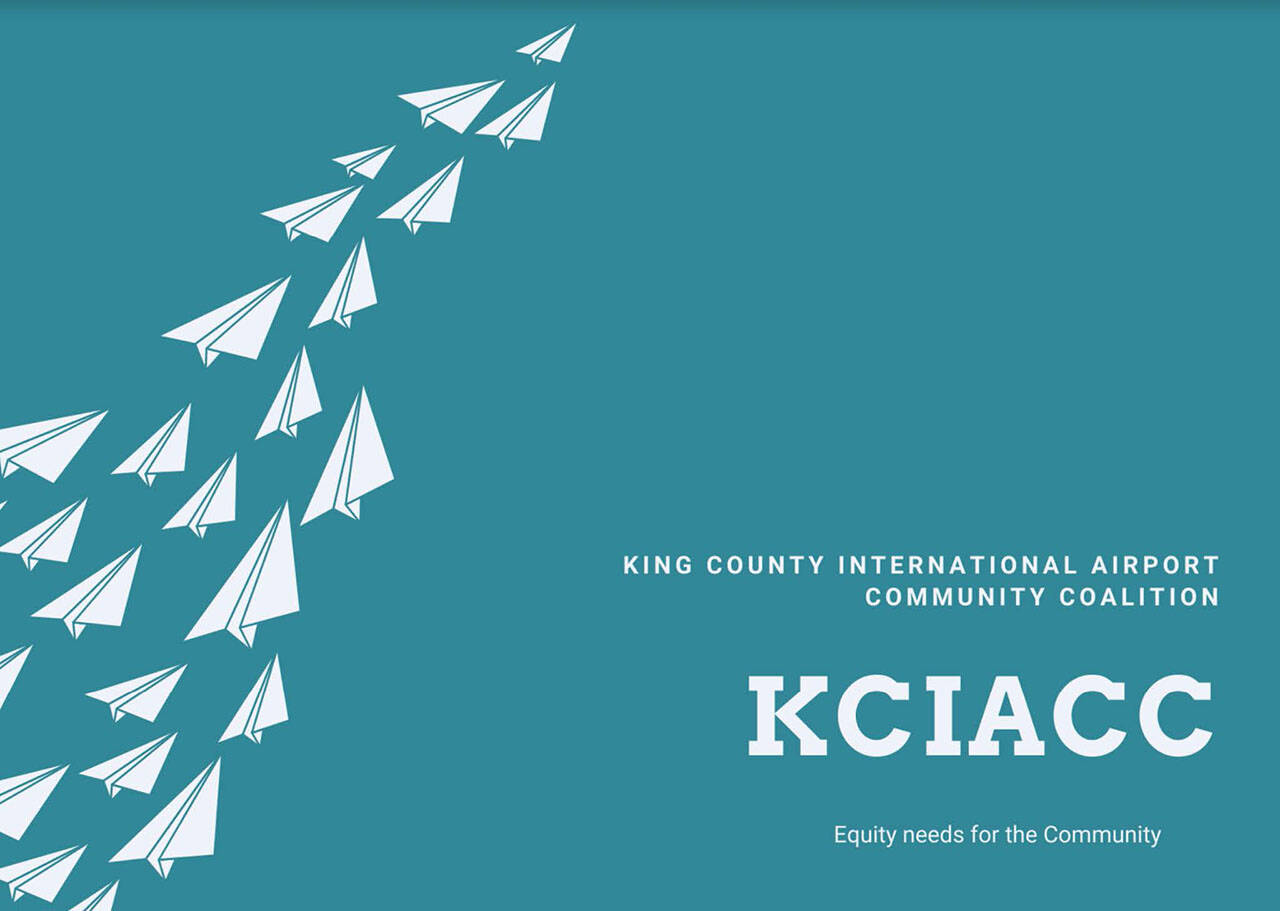Co-Authors: Christian Poulsen; King County International Airport Community Coalition
The Duwamish River Valley is home to some of Seattle and King County’s most vibrant and diverse communities. Those neighborhoods have the least amount of green spaces available to residents, the lowest regional air quality and host one of the most polluted sites in the nation in the Lower Duwamish and Harbor Island Superfund Cleanup Sites. King County International Airport (KCIA) / Boeing Field is one of the many sources of environmental pollution adjacent to these underserved and overburdened communities. Asthma rates in Georgetown and South Park are among the highest in the United States, and residents living within a mile of an airport can expect to live lives five years shorter than others, while mothers face a staggering 43% increased rate of premature birth compared to the rest of King County.
Background:
KCIA is owned and operated by the Executive Services branch of King County, situated within two miles of 12 playgrounds and playfields, 21 parks, 31 schools, and 61 places of worship, and is among the busiest general aviation airports in the county. Most of the planes using KCIA are part of a nationwide fleet of recreational vehicles still using leaded fuel. (EPA,1996) Several recent studies have positively linked living near busy general aviation airports like KCIA to elevated blood lead levels at or exceeding the levels found during the 2014 Flint Water Crisis, which the EPA says “…can cause irreversible and life-long health effects. Even low levels of lead in blood have been shown to affect IQ, ability to pay attention, and academic achievement.” (EPA, 1996) The new KCIA Master Plan proposes a 1.3% annual increase in flights over the next 2 decades. In addition, it plans to move the large runway 300 ft north, construct a new fuel farm within a few hundred yards of the Duwamish River, redevelop the hangar area, construct a parking ramp for large aircrafts, re-pave runways, and purchase land for facilities’ new runway location. To date, KCIA has not measured nor provided public data regarding its impacts on neighboring communities, proposed any environmental justice programs to mitigate the airport’s contribution to the poor regional air quality, and KCIA leadership has made little attempt to engage the surrounding communities in substantive outreach of any kind. Leaded aviation fuel contains ~2.12 grams of lead per gallon of gas, and the most recent detailed facilities report for KCIA from the EPA in 2017 estimated the KCIA airport was responsible for nearly 800 pounds of airborne lead emissions that year, yet the proposed master plan’s new fuel farm includes no new unleaded aviation fuel tanks or distribution infrastructure.
The risks of leaded aviation gasoline to communities neighboring airports prompted the EPA to prepare a proposed avgas endangerment finding long ago. The EPA anticipates issuing this proposed endangerment finding this year after it completes its review of the “large body of scientific information about the impact of avgas-based lead emissions on air quality at and near airports,” including an evaluation of potentially exposed populations. Letter from United States EPA Region 10 Administrator Casey Sixkiller to Seattle City Councilmember Alex Pedersen, May 18, 2022.
The King County International Airport Community Coalition, chaired by former Washington State House Representative Velma Veloria, has co-worked on a draft Ordinance 2022-0011, sponsored by King County Councilmember Joe McDermott, which calls for the creation of a community-led advisory committee to advise and make recommendations to KCIA and County officials and create a community benefits agreement to address environmental, health, economic, and livability concerns, such as to:
- Require KCIA to incorporate county programs and initiatives into its operations, including the county’s equity and social justice, climate action (SCAP), and priority hire plans, and racism as a public health crisis initiative; and to
- Require KCIA to perform an environmental impact assessment including noise, emissions, and the public health impacts of operations.
In addition to working on the ordinance, the King County International Airport Community Coalition was able to advocate for the airport to seek alternatives to the 300ft expansion and stop that from happening. This also benefited the general aviation community at the airport. The King County International Airport Community Coalition also successfully advocated for the airport to push pause on its master plan process and to revamp it to include more recent data and broader engagement with adjacent and impacted communities around the airport. This work was a result of the community coming together to advocate for better and bring community concerns to the conversation.
As good neighbors, we understand the importance of health imperatives of residents and youth who live in and around the King County International Airport. The importance of acknowledging the impacts of the health disparities on communities of color and underrepresented communities are vital in making sure that we live up to equity on a regional level. The airport is in a position to be a good neighbor model, and we urge the airport, elected officials and stakeholders to support Ordinance 2022-0011. If we want to see a flourishing, healthy, dynamic and equitable county, we must anchor the needs of communities who are furthest from equity and the most impacted by environmental and social harm. We encourage community and stakeholders to sign on to our ask in making sure that the ordinance will pass out of the King County Council Government Accountability and Oversight Committee as well as the full council. You can go to our website to find more information as well as sign on to support at: https://www.drcc.org/kciacc
In Community and Strength,
King County International Airport Community Coalition


